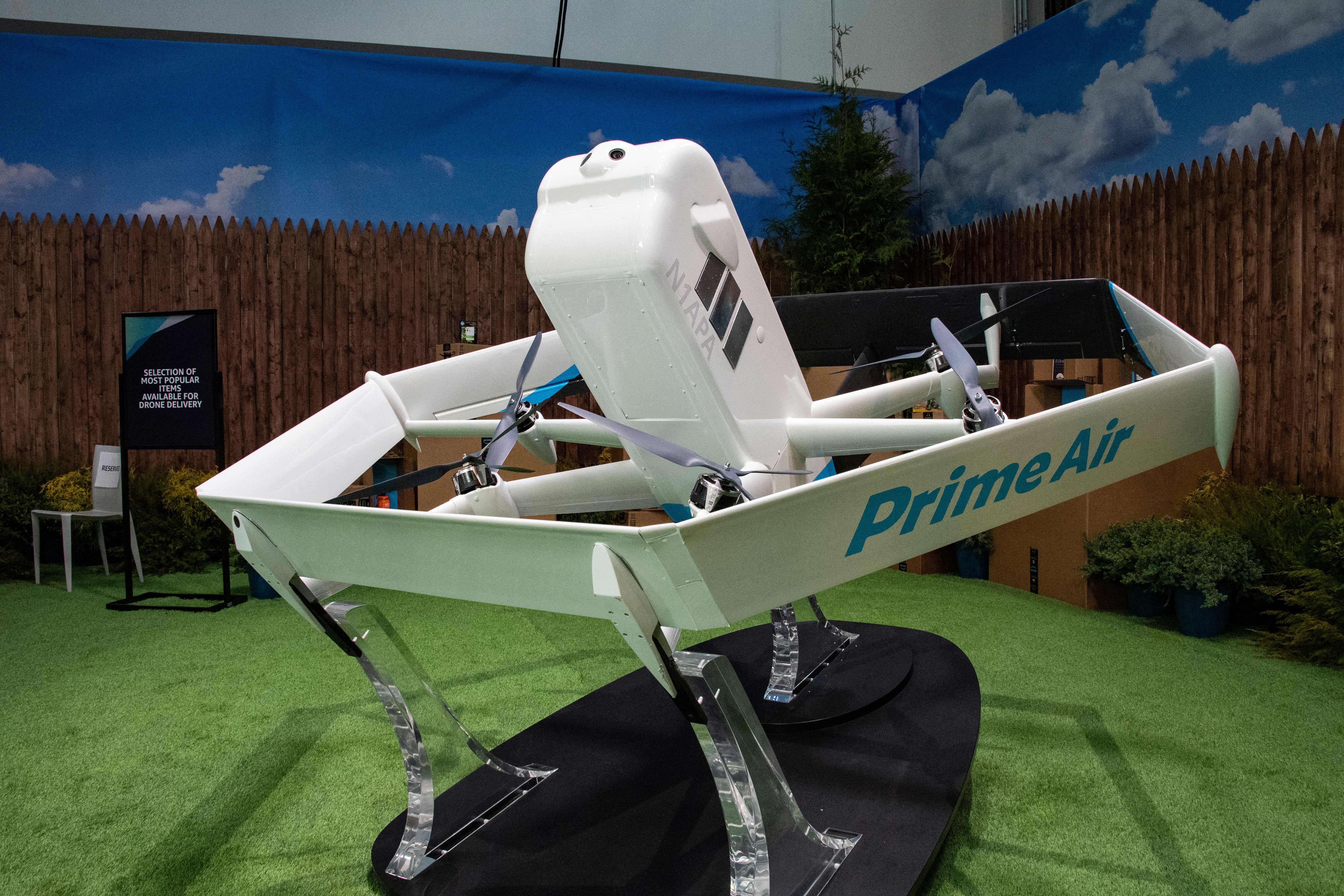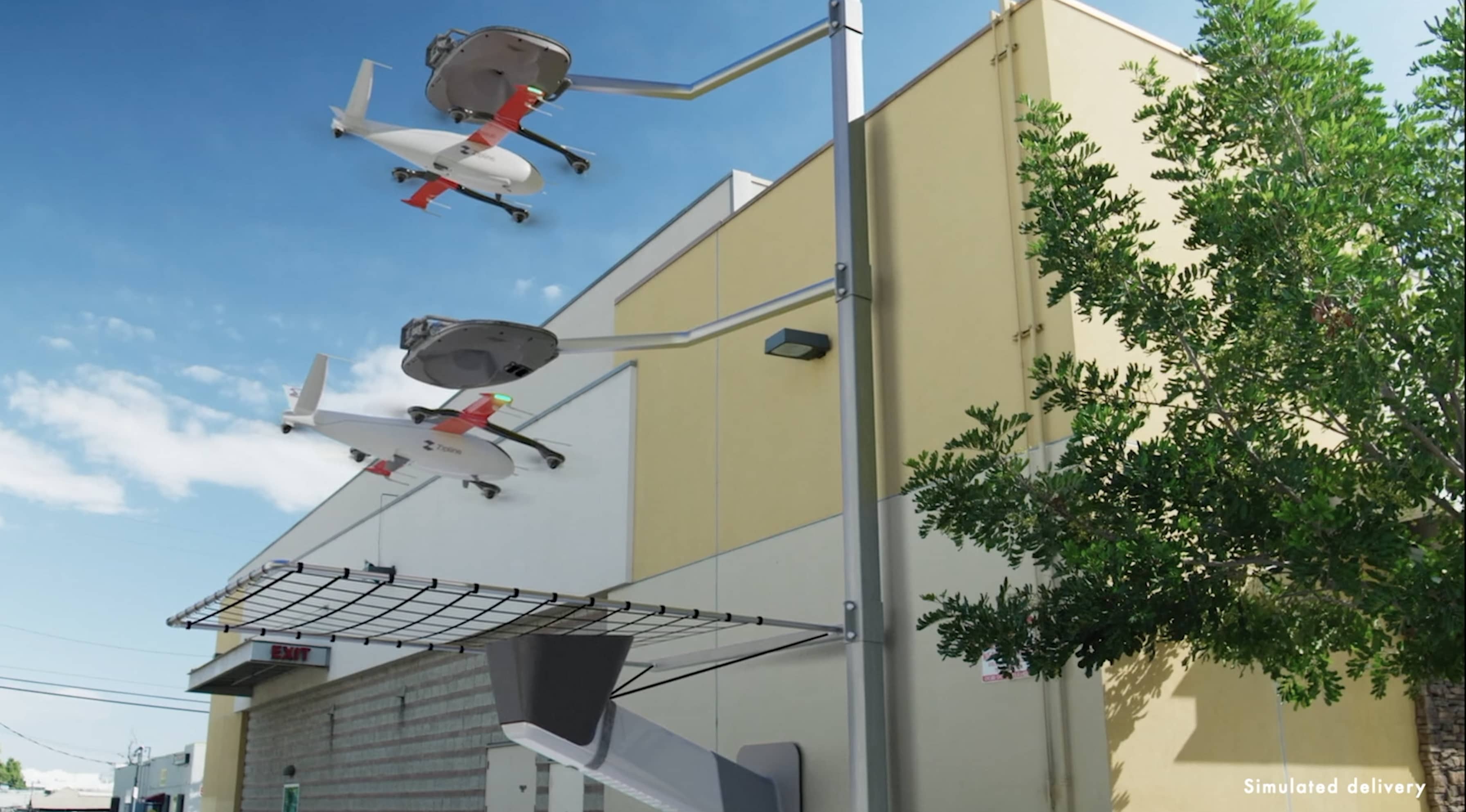
Massachusetts Secretary of Transportation Tibbits-Nutt and Aeronautics Administrator Jeffrey DeCarlo hold a drone while receiving a demonstration of the American Robotics Optimus Drone-In-A-Box Unmanned Aerial System.
State transportation officials have secured a special federal waiver to inspect the Massachusetts rail network with long-distance drone flights when the aircraft is not within the operator's sight, and it's looking into how it could eventually use drones to create "highways in the sky."
By being allowed to fly uncrewed aircraft "beyond visual line of sight" (BVLOS), or away from the remote drone operators' fields of vision, the Massachusetts Department of Transportation says its Drone Operations Program will more efficiently be able to collect data on more than 1,000 miles of rail so it can spot things like overgrown trees and vegetation, and contribute to storm management efforts.
WATCH ANYTIME FOR FREE
Stream NBC10 Boston news for free, 24/7, wherever you are. |
MassDOT announced the sweeping waiver issued by the Federal Aviation Administration on Friday. A previous waiver allowed MassDOT to fly drones BVLOS over the Fitchburg Line on the MBTA's commuter rail.
“Our latest BVLOS waiver not only marks a quantum leap for infrastructure inspection services in Massachusetts but provides a model for all states to inspect a variety of infrastructure more rapidly, accurately, and comprehensively,” MassDOT Aeronautics Administrator Jeff DeCarlo said. “This waiver also allows us to explore critical new ways to improve the state’s operations, from airspace monitoring to medical emergency response.”
Get updates on what's happening in Boston to your inbox. Sign up for our News Headlines newsletter.

MBTA General Manager Phil Eng said the waiver was the product of years of close work with federal officials. "By greatly facilitating long-distance drone operations, this BVLOS waiver represents a game-changer for rail data collection, analysis, and safety," he said.
MassDOT said its approach to BVLOS drone flights is a "unique 'blended' performance-based approach, providing flexibility to adjust operations according to variations in factors such as geography, urban density, or airspace." For drone flights up to 50 feet above rail lines or up to 50 feet above obstructions, MassDOT has an "obstruction shielding" waiver, which it said allows it to fly drones BVLOS without the need for visual observers. For flights higher than 50 feet and up to 400 feet above obstructions, MassDOT's remote drone operators will rely on a visual observer to make sure there is a safe distance between the drone and any crewed aircraft.
"This blended, flexible approach to operations will allow MassDOT Aeronautics to perform its mission more efficiently across a variety of landscapes with rail lines," MassDOT said in a press release.
MassDOT said its Aeronautics Division's Commonwealth UAS Integration Program is developing a statewide BVLOS rail initiative with help from Massachusetts-based MITRE, the U.S. Department of Transportation Volpe Center in Cambridge, and MIT Lincoln Laboratory. That effort is looking to "expand the use of drones to improve the safety, efficiency, and effectiveness of transportation services across MassDOT, the MBTA, and other state agencies."
“By enabling state-wide Beyond Visual Line of Sight drone flights, this waiver also lays the groundwork for sensor systems and data solutions that will integrate drones and Advanced Air Mobility passenger vehicles such as electric vertical takeoff and landing aircraft into ‘highways in the sky’,” Dr. Scott Uebelhart, chief scientist of MassDOT’s Aeronautics Advanced Aviation Technologies Group and CUIP Senior Program Manager, said.



